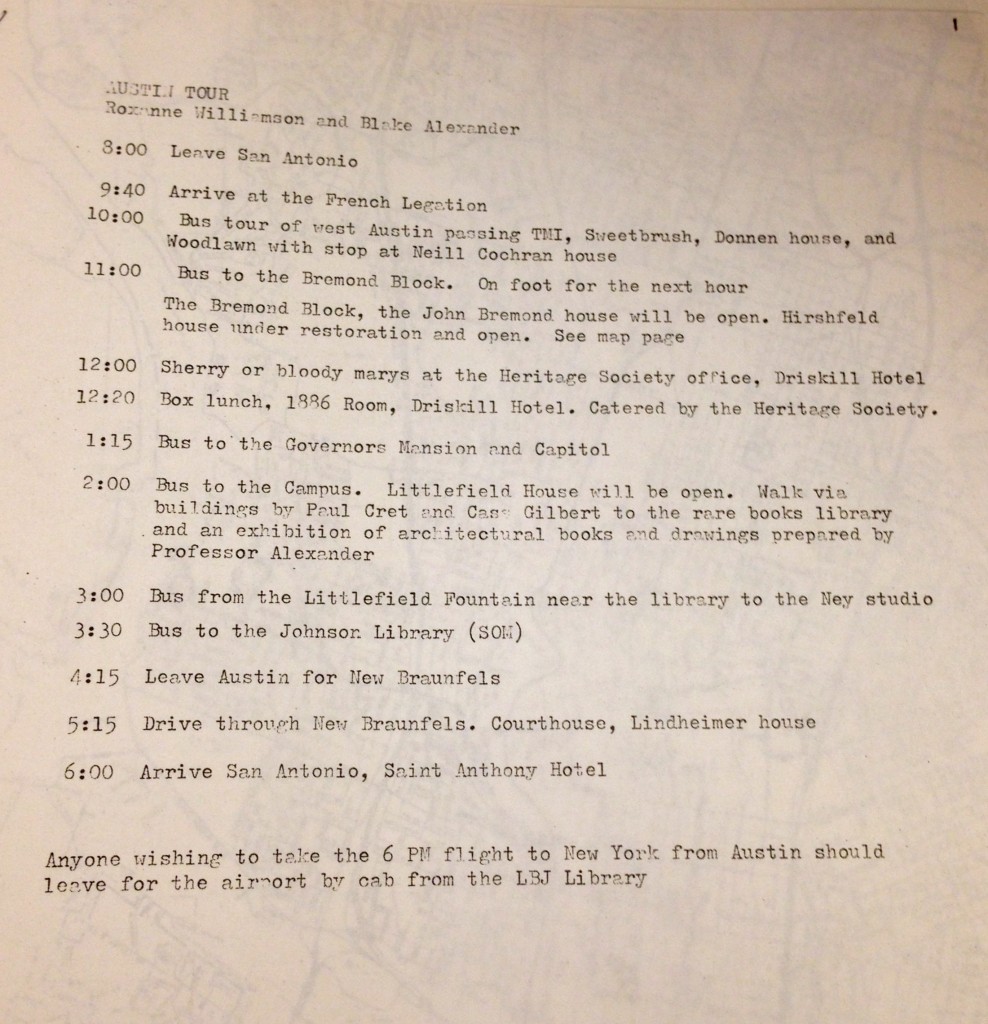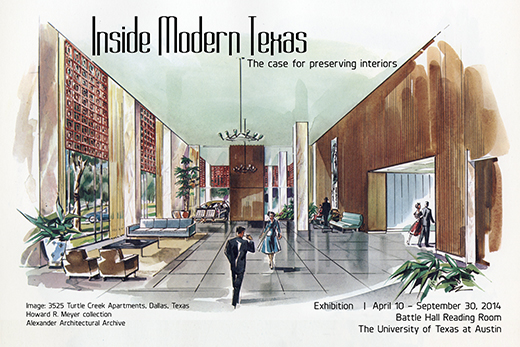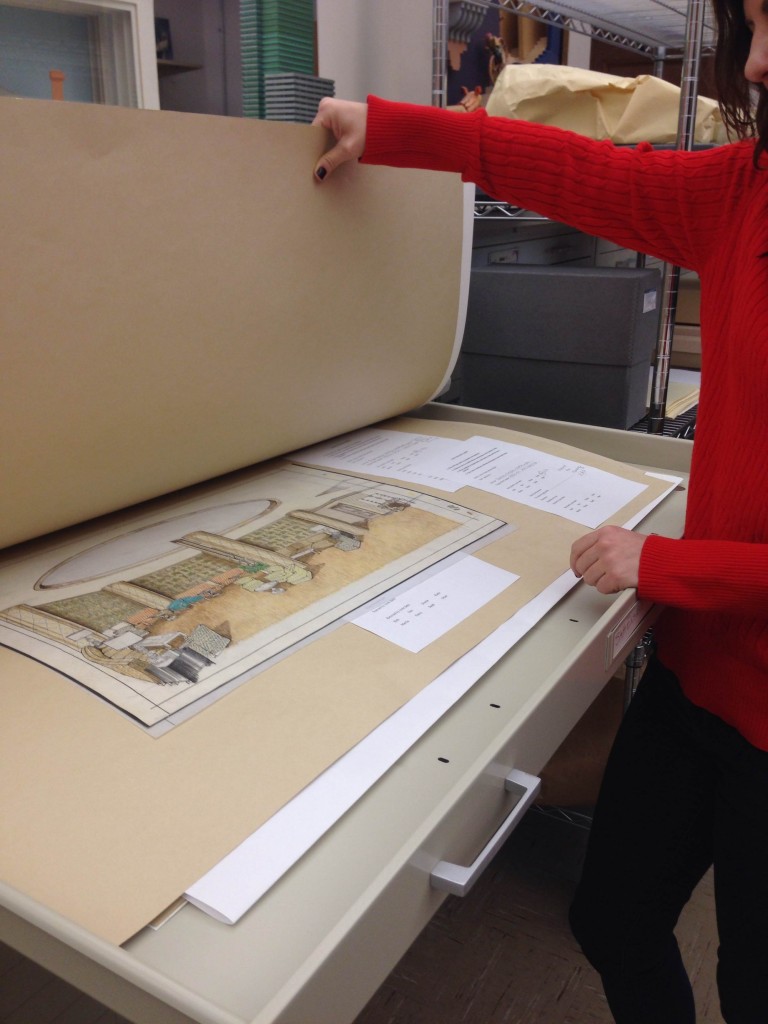It’s official: The Society of Architectural Historians Annual Conference is underway in our beloved Austin! Please visit here for a full listing of the conference’s events.
Because of the conference’s focus on architectural history, along with the opening of Emily Ardoin’s exhibit “Inside Modern Texas: A Case for Preserving Interiors,” we decided to delve into our archive’s bountiful resources to see if we could uncover material that was especially pertinent to the conference’s visit. The Alexander Architectural Archive holds the namesake of Drury Blakeley Alexander, architectural historian and Professor Emeritus at the University of Texas, who was an active member of the Society of Architectural Historians and believed wholly in the value of archival materials and research.
This fact was proven when Donna Coates, our Curatorial Assistant for Technical Services, informed me that Alexander’s collection included folders upon folders of saved Society of Architectural Historians conference materials. These folders contain invitations, programs, general correspondence, and more! I couldn’t believe that such a treasure is held within our very own Archive walls, provided by the namesake of the Archive itself. I also gained respect for low-grade hoarders; if I could high five Alexander for ensuring he retained nearly ALL of the materials of the conferences he attended, I totally would.
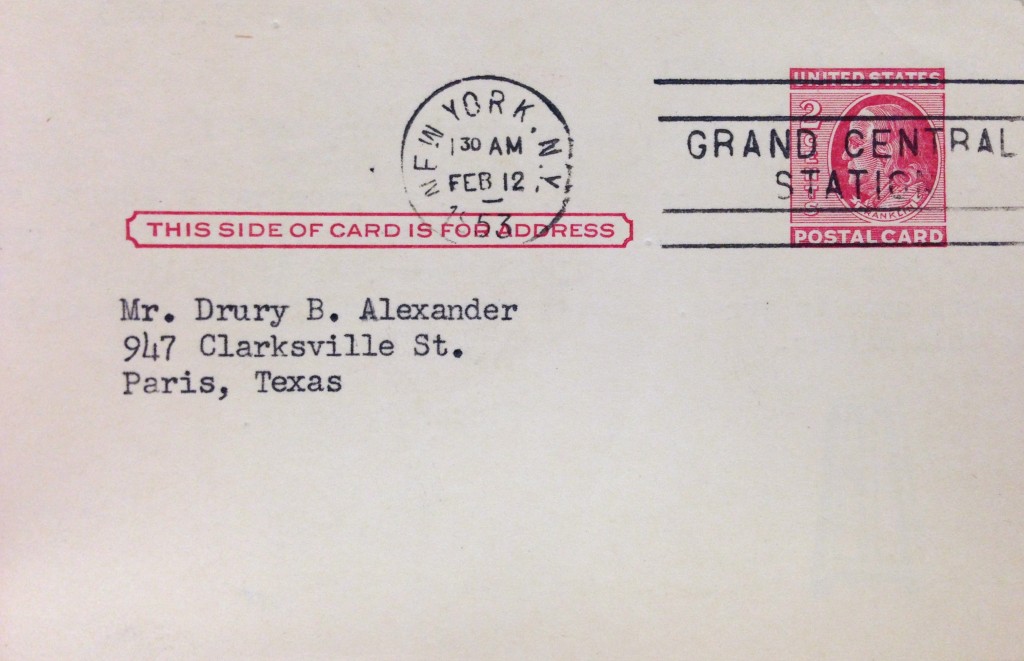
As I began sifting through the boxes that contained these folders, I became overwhelmed with the material. I also found myself simultaneously wishing that I could round up every interested individual in the Austin area and show them all of these wonderful treasures that Alexander had left for Archive users to potentially uncover and explore. As I grappled with the best way to present this material – ranging from the conference held 50 years ago, to showing snippets of material from every recent decade – I finally stumbled upon the folder I was looking for: the SAH Conference of 1978, which was held in nearby San Antonio.

This folder was so much fun to sift through, as it was full of correspondence between Alexander and professors from neighboring Texas universities. Alexander, for the 31st annual conference, wanted to bring together architectural history professors from across Texas and set up a collaborative session on Texas architecture – very similar to this year’s Austin Seminar. His dedicated effort to weaving a special Texas flair into the 31st Annual Conference was apparent, and, as evidenced by the official conference material from that year, certainly was not a fruitless effort. The conference featured several speakers presenting on topics relating to architecture in Texas, and he helped plan a day tour to Austin to unfurl the treasures that serve as some of the cornerstones of our great city.
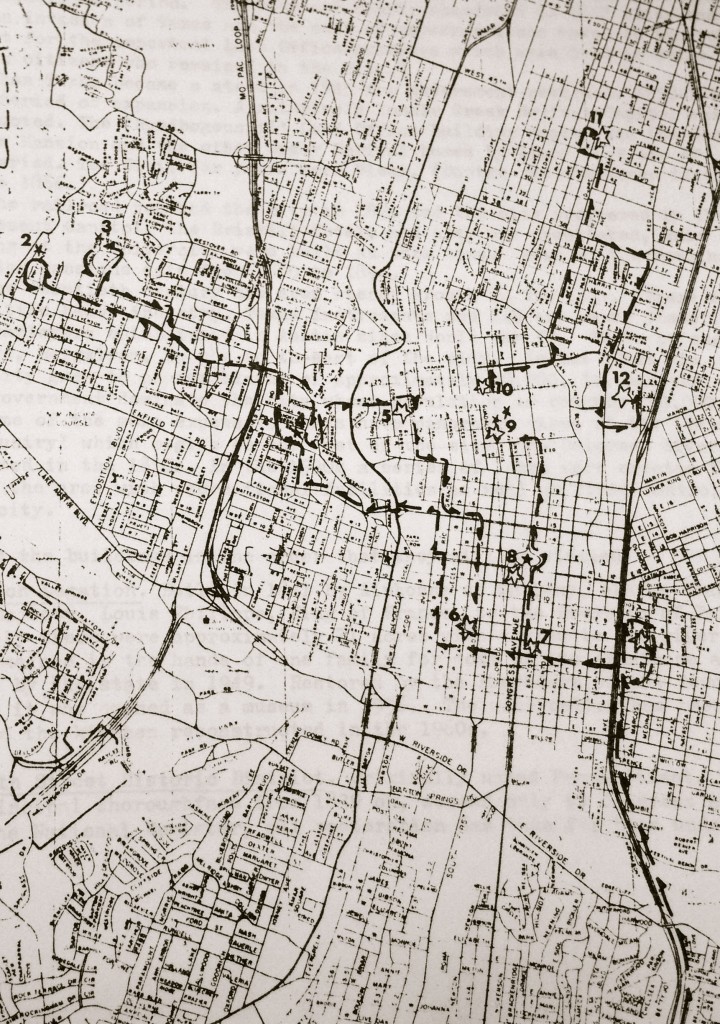
Looking through these folders not only made me excited for this year’s Society of Architectural Historians Conference, but also reaffirmed how lucky we are to have such an incredible Architectural Archive as a resource for research and beyond. It is truly fitting that the namesake of the Archive contributed so greatly to the field of architectural history. Cheers to you, Blake Alexander!
